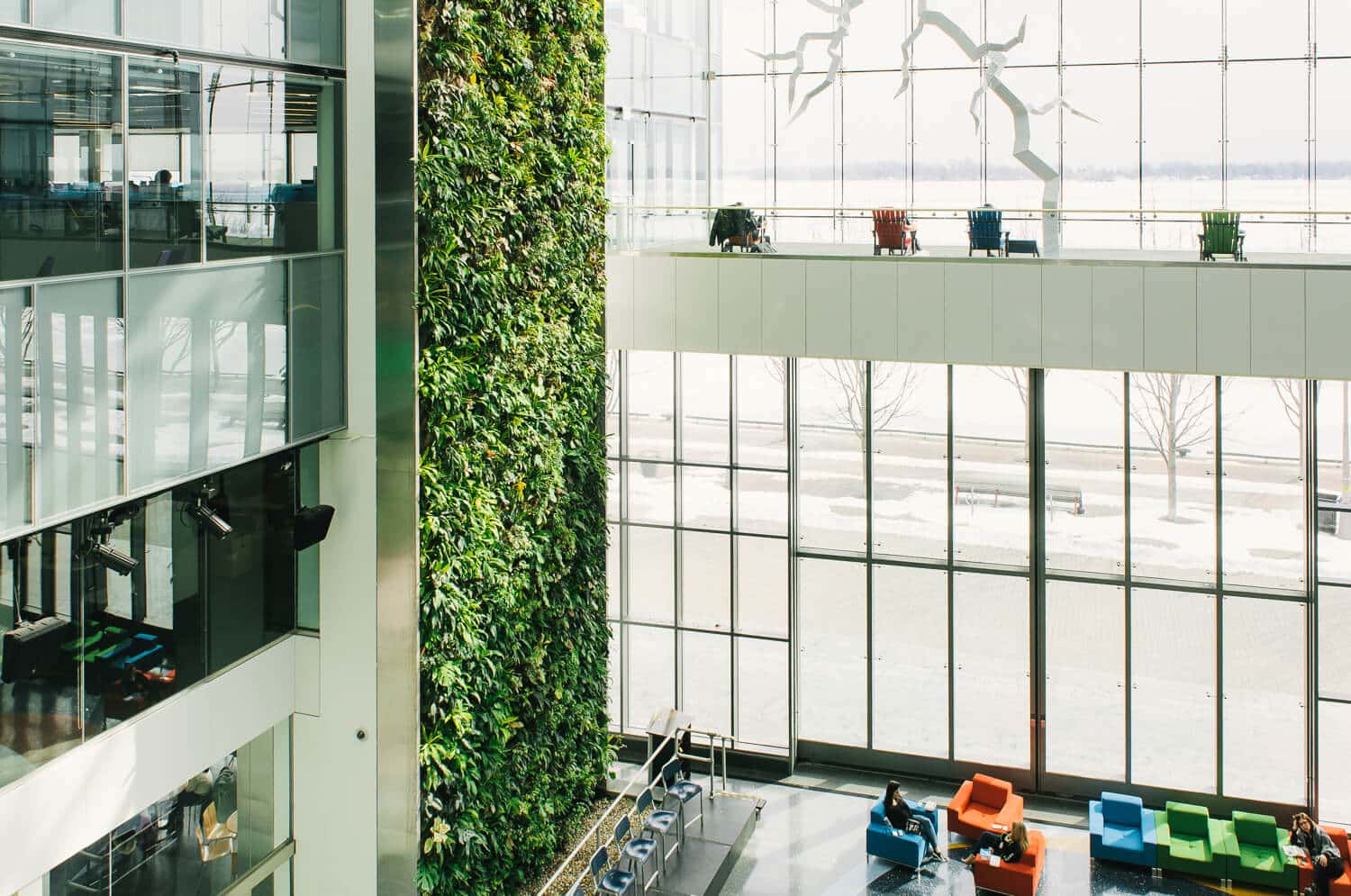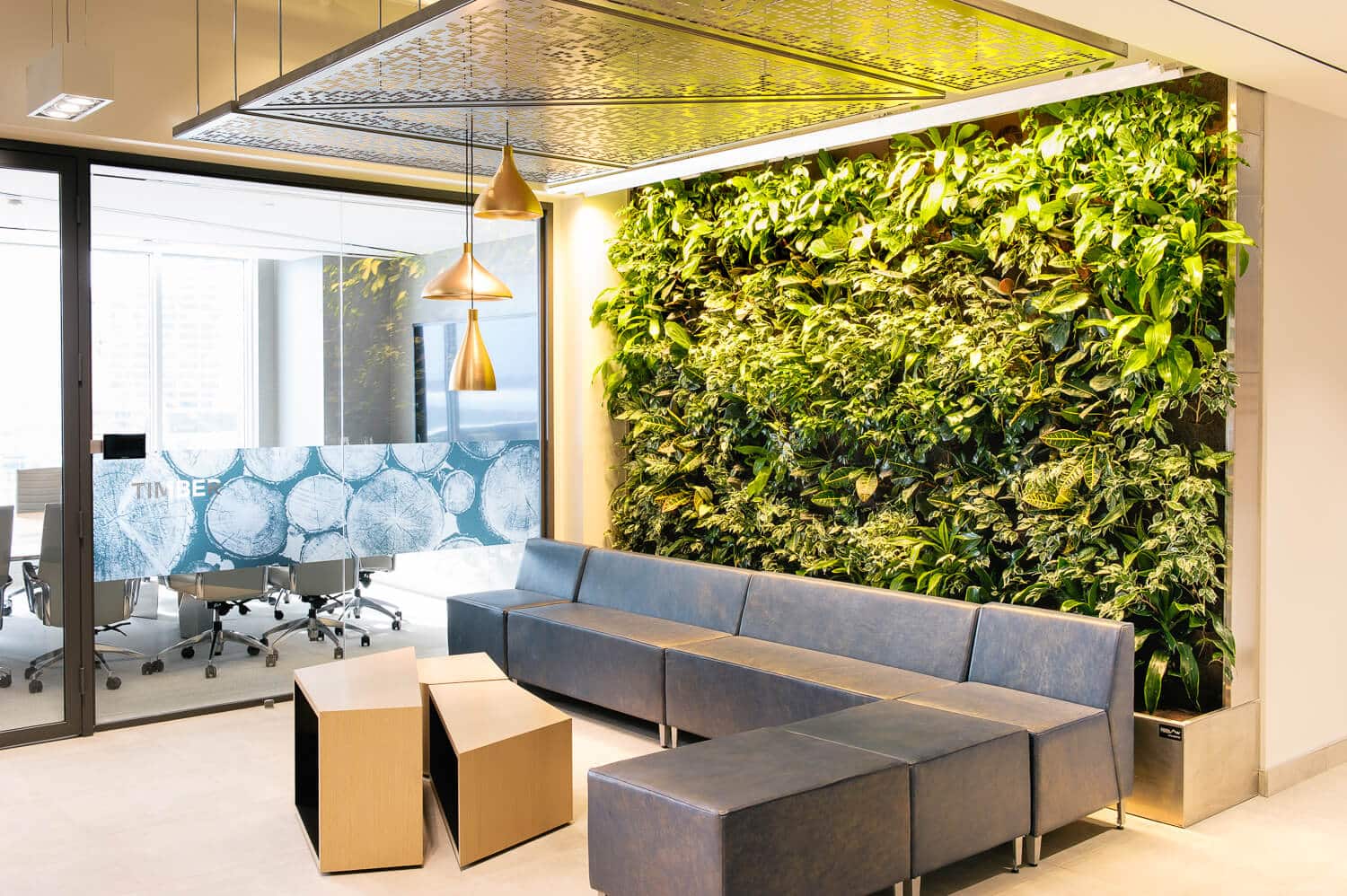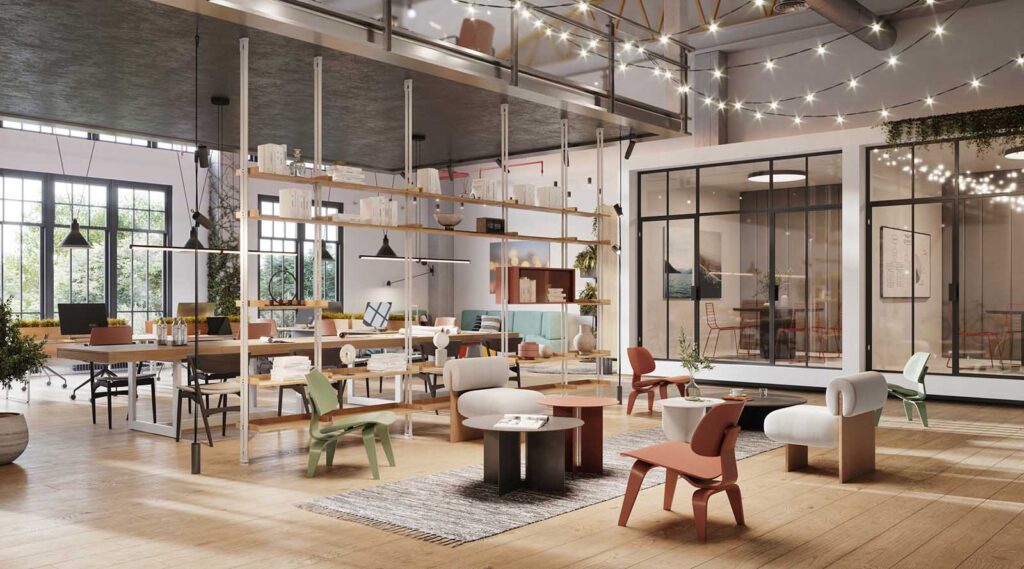Nedlaw Living Walls Design Consultant Mitchell Cowburn explores the science behind living wall biofilters and how they can translate into savings for builders and FMs.
We’ve all been to those offices that have a plethora of fake plants around every corner you turn. While visually appealing at times, they don’t actually add any positive benefits to the space outside of looking good from afar and even tricking a few people into thinking they’re the real thing.
To really make a noticeable difference in air quality and energy conservation, facilities management teams need to embrace biophilic design and introduce real plants. Nedlaw Living Walls is a company that specializes in providing custom living wall biofilters that address both of those elements while maintaining a high standard of design expertise. We talked to Nedlaw Design Consultant Mitchell Cowburn to get the scoop on living walls and how they help build more efficient office spaces.
To kick things off, can you give us the “elevator pitch” on why a company would want to incorporate a living wall into their office space — other than for obvious aesthetic purposes?
Cowburn: Besides aesthetics, there are really two other things we talk about with regard to these living wall biofilters: energy efficiency and wellness. The wellness side of things is our focus, but the energy efficiency component is also an important consideration that mechanical engineers and building owners are looking to achieve through biofiltration.
The elevator pitch would be something like this: we actively pull air through these living wall biofilters to clean and remove volatile organic compounds that are produced through indoor environments. In doing so, we create virtual outside air that’s valuable to building operators.

Now that we’ve got the elevator pitch down, can you speak to the science behind Nedlaw Living Walls and how your biofilters differ from other green walls on the market?
Cowburn: I’ll tell you a little bit about how the company came about to start. There was a scientist working at the University of Guelph who was doing research for two space agencies (one in Canada and one in Europe) about how to clean air and grow plants in space. That’s when all the research was conducted about how plants clean air and what impact that has.
Through that research, this scientist discovered that it wasn’t actually plant leaves that clean air — it’s the living microbes on the roots of the plant. They eat pollution and volatile organic compounds. It’s not a conventional filter where contaminants are trapped then you have to eventually replace the filter. It’s more of a long-term sustainable technology with no by-products where the walls consume the pollution thereby creating clean air.
Once this science was figured out, our company developed a system where we pass air through roots and that microbial activity filters air as effectively as possible.
So, what kind of minimum size requirements do you need to have to build one of these living walls?
Cowburn: There’s no minimum size requirement, but there’s a minimum depth of the basin that we need, which is about 10-16 inches — depending on height. If you’re looking for a more set number, you can use 15 inches since that’s our general standard.
We also need a little space off the wall, which should be about eight inches. That includes the aluminum infrastructure, growth media (which allows the root network to grow freely in between), and the space behind the growth media to allow for air flow.

Alright, let’s say we check off those minimum depth requirements and are ready to install a living wall in our office space. What does that process look like?
Cowburn: There are three requirements to having a living wall and it’s kind of like a dishwasher: power, water, and drain.
We utilize hydroponics, which is a plant-growing system that uses water and liquid nutrients as opposed to soil. We have a basin at the bottom of our living walls which contains water and liquid nutrients. The water is then pumped to the top of the wall, distributed throughout the entire wall, and all the plants receive nutrients on a constant basis.
There are two ways the living walls can be implemented into an office space: via new construction or retrofitting an existing building. In a new construction, we usually get in at the design phase. Architects, building owners, or engineers will reach out with their drawings and say that they’re proposing a living wall in a particular spot — “what do we need to make it work?” That’s when we tell them we need a half-inch water line, three-inch drain, and two circuits of power.
It’s very similar in a retrofit scenario, sometimes we just need to run the water line or drain from the existing location. However, it can be more challenging if that’s not readily available.

Speaking of the design phase, how do you go about striking a balance between functionality and something that will be visually appealing for office inhabitants as well?
Cowburn: What’s great about our company is that we build everything in-house and have a fully operational metal shop. In terms of aesthetics and design, we’re very flexible about what we can build because we build it custom for every client.
We can build curved walls, elevated walls, we can put signs in walls, and so on. Every office space is so different. We always recommend installing the living wall near natural light, if possible. That said, it’s not actually necessary. We have a lot of walls that survive strictly off artificial light.
In terms of function, there are three ways we actively clean air inside of buildings. The first way is through a free-standing unit, which is the most basic unit we have. The air is pulled through the wall then recirculated out of a vent on the existing wall. The air is being cleaned locally, not redistributed, and constantly being recirculated onto that area.
The second way would be a hybrid unit. We can connect the living wall to a supply duct, which is already supplying fresh air through the existing space. We would just hook the unit up to that and pass the air through multiple rooms or wherever that supply duct is going.
The third and most effective way of providing even distribution of clean air throughout the entire building is our fully integrated design, which is the most functional unit that we have. It connects to the return duct and, as air is leaving the building, we pull it through the living wall and it’s brought back to the air-handling unit and distributed through every single supply duct.
We recommend one square-foot of living wall for every hundred square-feet of building space. If people are looking to effectively clean their building, that would be our recommendation. If they want to build bigger than that to get a more striking design factor in their building, we can also do that.

For FMs out there looking to save their organization money, what are some of the energy conservation cost savings associated with indoor biofilters?
Cowburn: Biofilters create supplemental or replacement intake air (i.e. increase ventilation) at a much lower cost than traditional heating and cooling methods and systems. This capability is significant for any office space or building, whether they are pursuing their Leadership in Energy and Environmental Design (LEED) certification or not. It can also be used for retrofits where they just want a better space, but aren’t necessarily trying to achieve any certification.
Instead of taking all that air that’s now dirty and pushing it outside, which then needs to be reheated or re-cooled, we clean it and recirculate it into the space. We can also measure how much energy is required to ventilate the air that these biolfilters are displacing. We help builders and FMs achieve that air quality they need without needing to increase the amount of ventilation required — which turns into a lot of energy savings.
Find out more about how Nedlaw Living Walls can help your organization cut energy costs with their custom living wall biofilters at their website.
How do you think your workplace would benefit from having a living wall in their office space? Join the conversation and leave us a comment below.
Photos: Courtesy of Nedlaw Living Walls, Shutterstock





